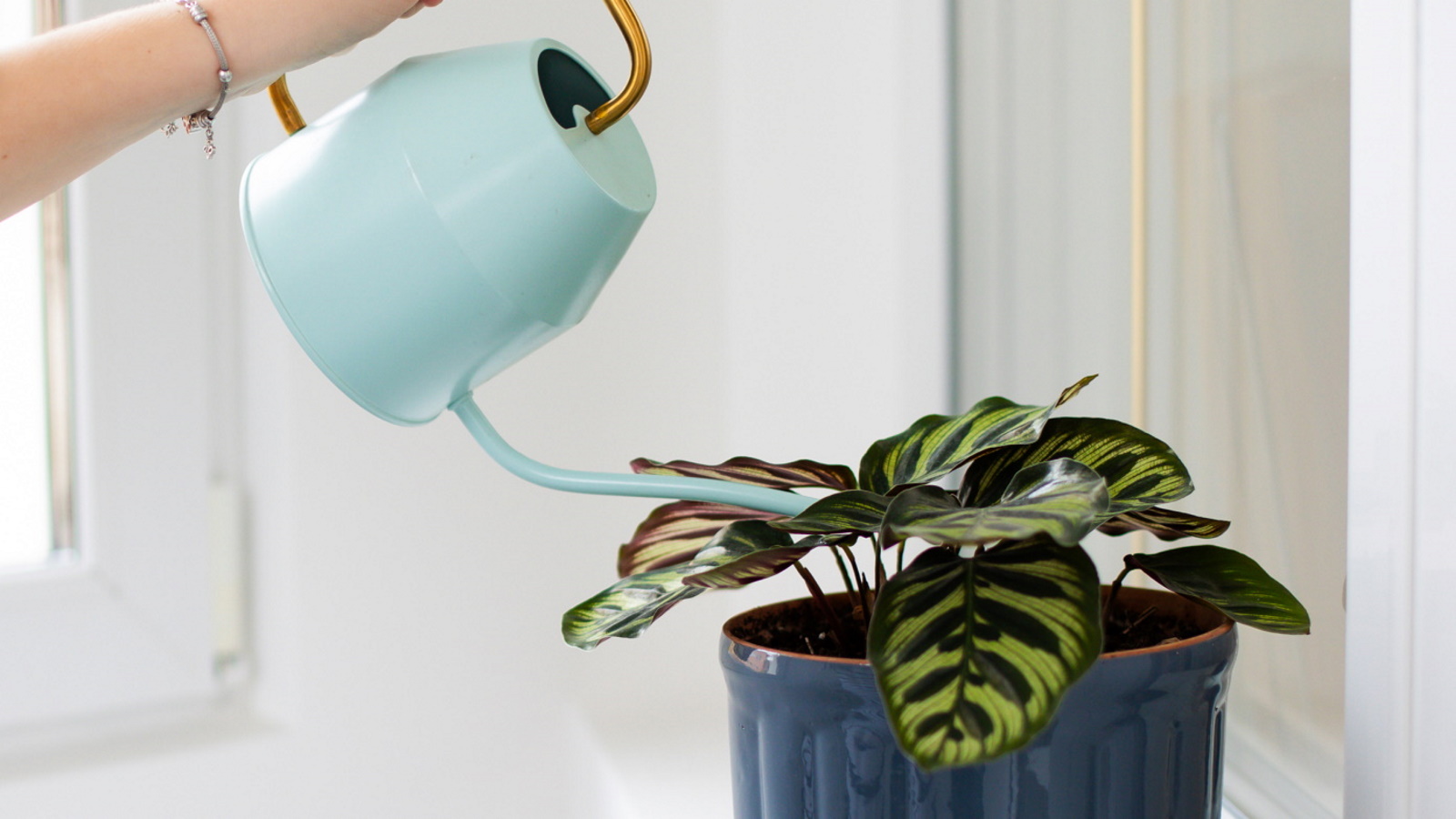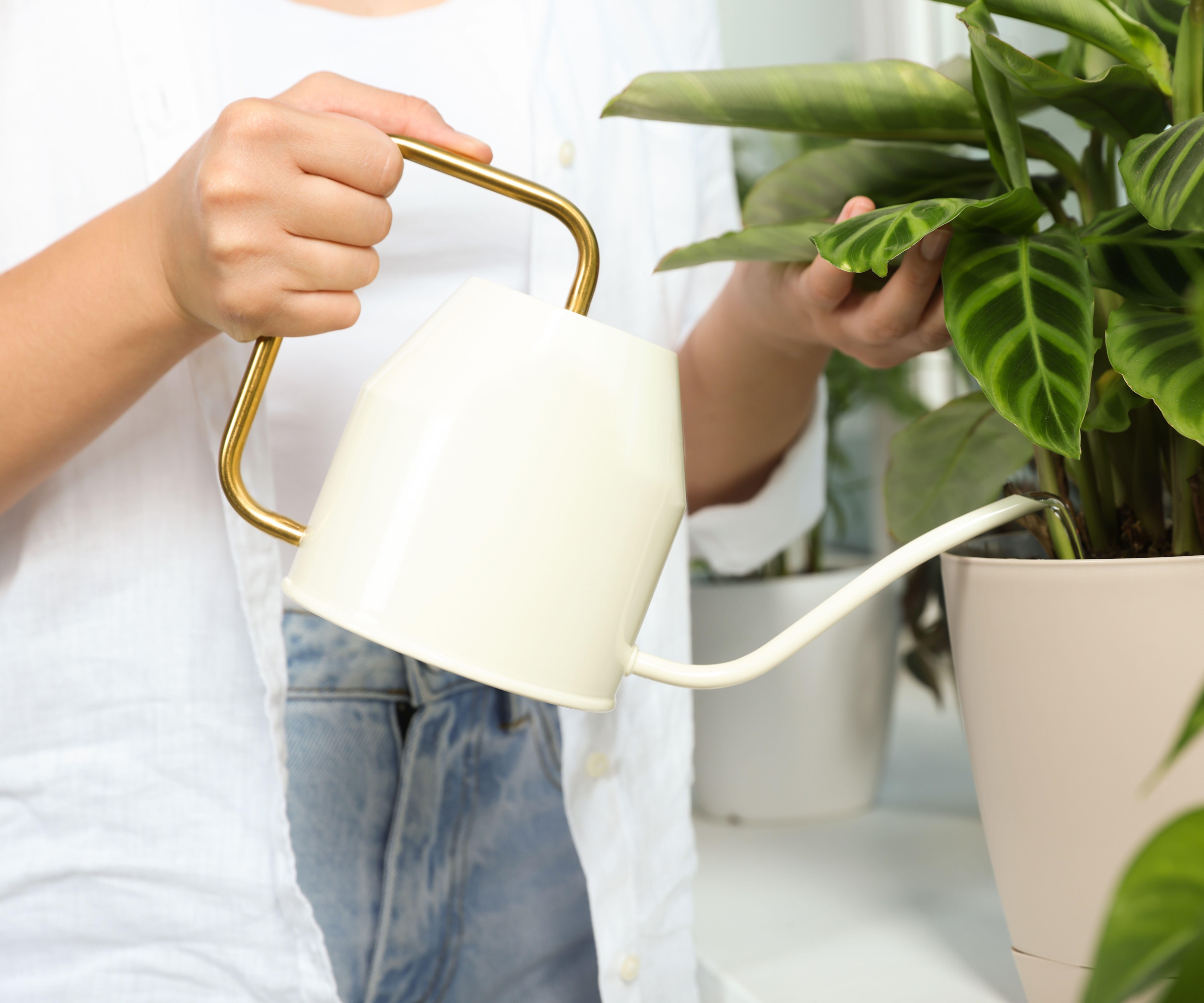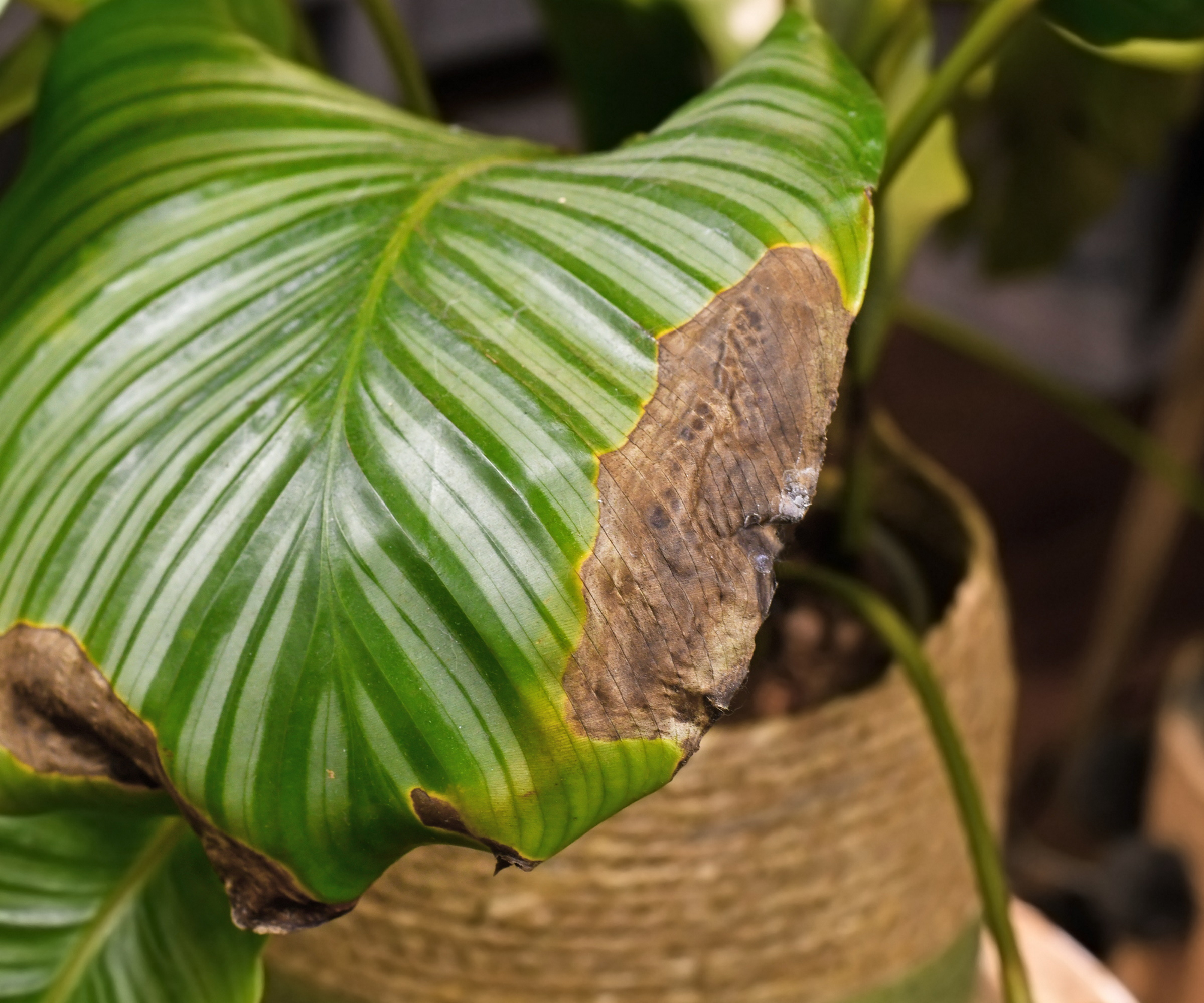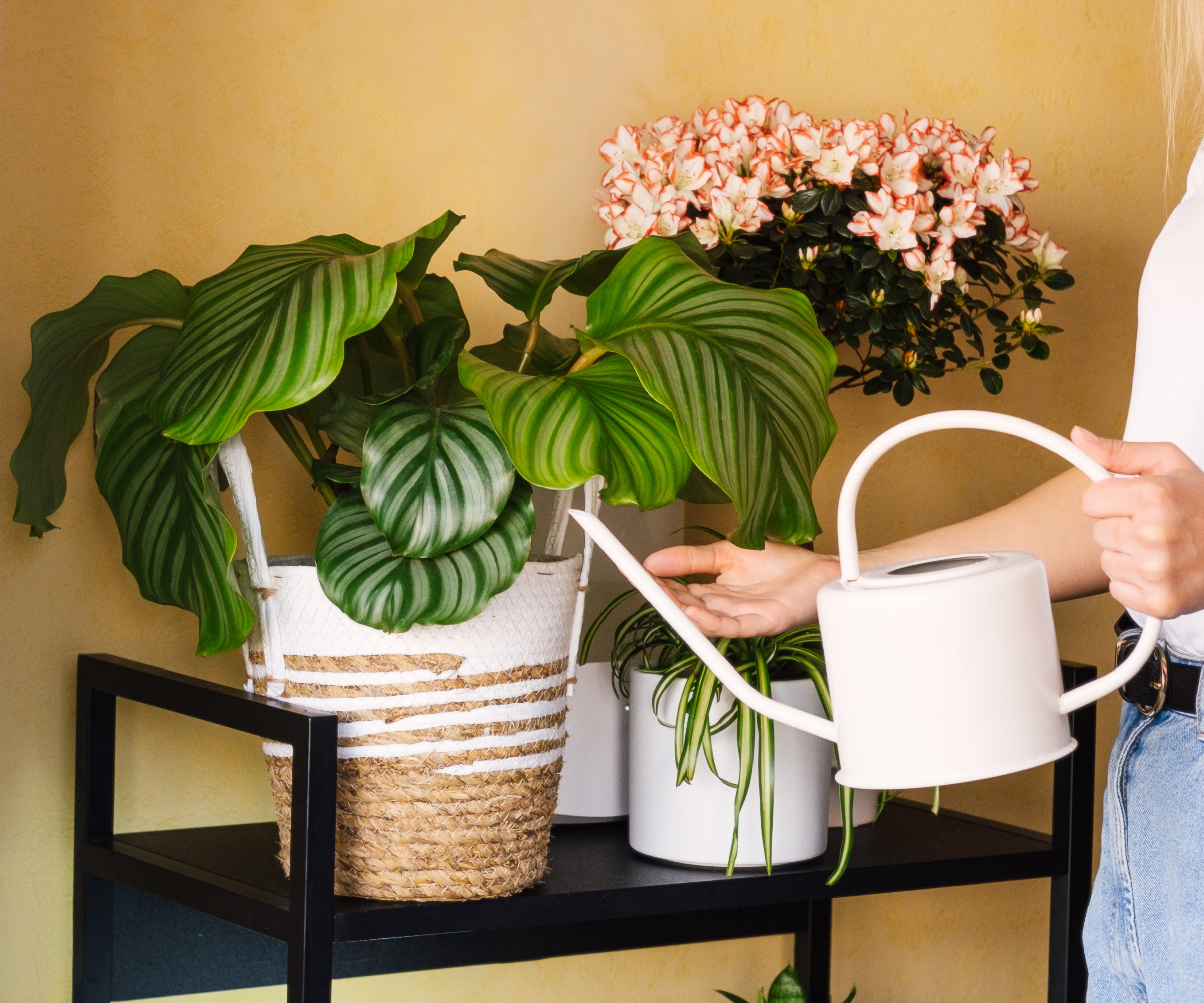
As a plant parent to multiple calatheas, it has taken me some time to master the skill of watering them. These demanding indoor plants are not for beginners wanting something more low-maintenance as they will quickly have a dramatic reaction to improper growing conditions.
When I first started out with my calatheas, I noticed the edges of the leaves start to curl if they had too much or too little water. Likewise, brown patches would appear on the beautiful patterned foliage, hindering their bold appearance.
It takes a bit of trial and error and understanding more about the native environment of calatheas to ace caring for them. Luckily, we've spoken to experts to find out more about how to water calatheas correctly and the common mistakes to avoid.

Calathea watering errors
Nine times out of 10, incorrectly watering houseplants is what kills them off. It's one of the most common indoor plant mistakes that many make, but it can be easily fixed by understanding more about the natural habitat of your plant and replicating conditions at home.

Calatheas are native to tropical climates, growing on forest floors in south and central America. There, they experience high humidity and retain water well.
Not striking the balance between letting your calathea dry out enough and not letting it entirely dry out entirely is where most houseplant lovers go wrong.
Vladan Nikolic, houseplant expert and founder of Mr Houseplant, notes that there are a few signs your calathea has been over or underwatered:
- Leaf curling
- Yellow or brown leaves
- Crispy leaves
- Mushy stems and roots
But don't worry, our expert guide to watering calatheas correctly will help you keep yours happy so that you can enjoy its unique, striking foliage for longer.
How to water calatheas

Before you even pick up your watering can, you need to check your calathea's soil. There are lots of factors that will affect when your calathea needs watering, so it's not advised to have a set watering schedule for these trickier plants.
'The exact watering frequency is unique and depends on environmental factors such as humidity, light and temperature,' says Vladan.
You can use your finger and observe the soil to see how dry it is. 'When watering a calathea, you want to allow about 50% of the soil to dry out between waterings,' says Paris Lalicata, head of plant education and community at The Sill.
Watering your calathea while it is still too wet risks root rot, which can kill off your plant. You can use tools like this plant water meter from Amazon to help you monitor moisture levels in the soil.

Once you are happy that your calathea has dried out enough, making sure not to let it dry entirely, you can get started with watering.
'Water the entire surface of the soil well and avoid splashing the leaves,' says Vladan. Saturating the leaves of calatheas could scar the foliage, hindering the appearance of their unique patterns.
A planter with drainage holes, like this ceramic container from Amazon, is effective for fussier plants like calatheas because it means excess water can be removed.
'Don’t let your calathea sit in a saucer filled with water because this can lead to fungal infections and root rot. Let all the excess water drain and empty the saucer,' says Vladan.
'Calatheas are sensitive to chemicals and minerals in tap water, such as fluoride and chlorine, so it’s best to water them with distilled water or rainwater,' he adds.
Shop stylish watering cans
Add a bit of glam to indoor gardening with this gold watering can. The slender handle and sprout are ideal for houseplant care.
This beautiful, dark green watering can holds 1.5 litres of water and is made of 100% recyclable plastic. It has a removable rainfall head, making it versatile to use.
This 1-litre watering can is rust-resistant and handcrafted from metal. The narrow sprout helps to reach the right spots when watering houseplants.
FAQs
Should I mist my calathea?
Calathea plants are native to tropical climates of south and central American forests. They thrive best with higher humidity, so it's a good idea to create this environment when growing it as a houseplant. Misting is one method used to increase humidity for plants and your calathea will enjoy regular spritzing. However, be aware that oversaturating the foliage of calatheas can scar and damage the leaves. It is advised to not hold the mister too close to the leaves for this reason and to only lightly mist them.
Does my calathea need fertilizer?
Calatheas are fussy houseplants and do not enjoy being oversaturated. For this reason, you should only sparingly fertilize your calathea if you choose to give it plant food. It's not advised to fertilize it during colder months when it isn't growing because this increases risk of oversaturation and root rot. Fertilize during the warmer months only.
'To flush away salt or mineral build-up from fertilizers that can damage the root system, flush the soil with distilled water periodically,' suggests Vladan Nikolic, houseplant expert and founder of Mr Houseplant.
Incorrect watering is often the answer to your houseplant problems and this is especially true for calatheas which are notoriously tricky to satisfy. However, their striking foliage makes them well worth adding to your houseplant collection. You can even propagate calatheas to have more bold indoor plants in your home.







